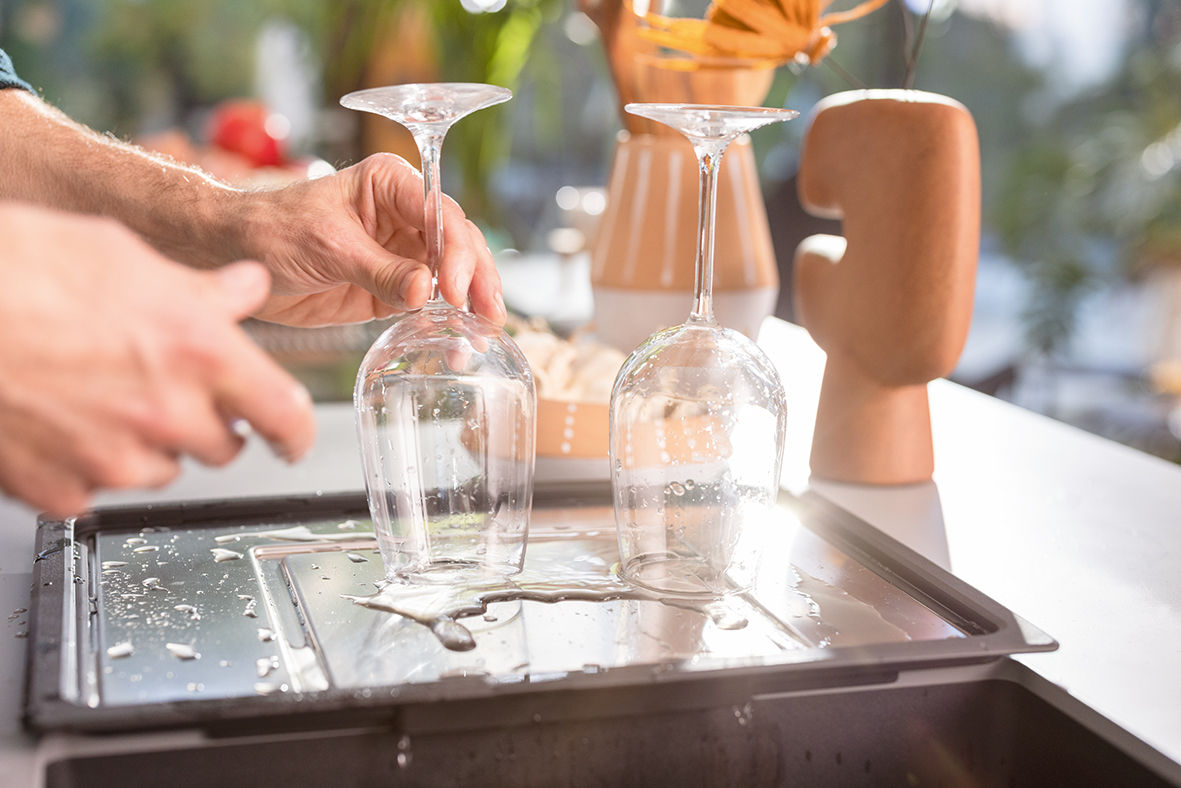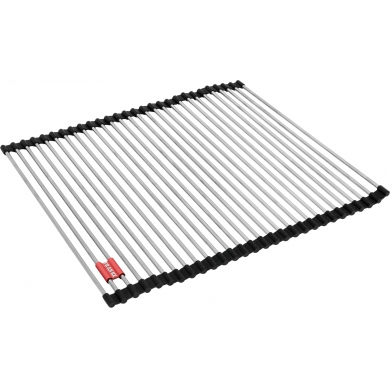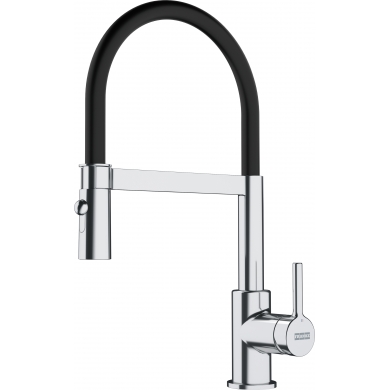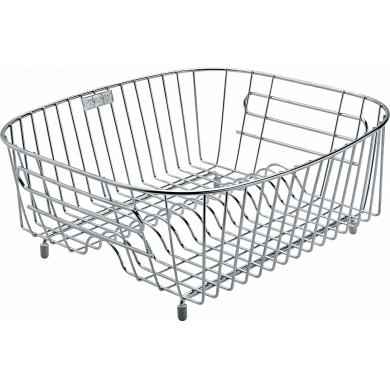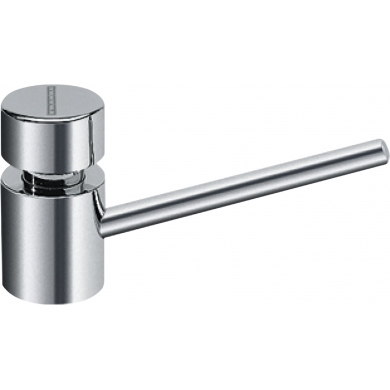Tips & Tricks:
Washing as you go especially during cooking is the best strategy. But while wash-as-you-go is most hygienic way to handle dishes in the kitchen, it’s not always practical for everyone. The tips below are for those who prefer to defer washing up to a later, designated cleaning time:
Pre-Rinsing
Pre-rinsing dishes is a step that’s often overlooked, but taking a minute to rinse any dish when it returns dirty to the kitchen will make much lighter work later. Scrape food off dirty dishes right away and give them a quick rinse with lukewarm water using a spray attachment or flexible sprayer.
Understanding Soap
A basic understanding of soap can affect how you wash up.
Soap acts as a surfactant — each soap molecule has two different ends: one that binds with grease and oil, and the other that binds with water. This allows the soap to break down and trap oil and dirt in water so it can be rinsed away. That’s why rinsing is essential to leave your dishes hygienic and sparkling clean.
If you keep your dish soap in a sink caddy, consider storing a separate hand soap alongside it for convenience.
Preparation
Start with as clear a workspace as possible. Ideally, have one clean sink ready to fill with soapy water — even if it means temporarily placing dirty dishes in a plastic container nearby.
Sort the dirty dishes before washing:
- Stack plates together
- Nest bowls into one another
- Use a mug or cup to hold used cutlery
This preparation will save time and reduce mess.

The Order of Washing
The general rule is wash from least greasy to most greasy. This usually follows this order:
- Glassware
- Cutlery
- Plates, bowls, and serving dishes
- Cooking utensils
- Pots and pans
Soaking Pots
“That pot isn’t soaking; it’s marinating in procrastination.” - Unknown
Pots and pans should be cleaned as soon as possible, using a soft bristle brush and pan scraper at room temperature. Soaking overnight can create a breeding ground for bacteria.
For burnt-on food, try this:
- Place the pot back on the stove with water.
- Bring it to a boil.
- Add 2 tablespoons of baking soda.
- Stir and gently scrape with a wooden spoon.
Be gentle with non-stick or delicate pans — avoid harsh scrubbers and strong chemicals.
Cast iron pans should be cleaned while still warm and without soap, as soap can strip the seasoning. Use kosher salt as a gentle abrasive if needed.
Ideal ways to wash depending on your Sink Configuration
Not all sinks are made equally! Here’s the most efficient way to use your sink depending on its configuration:
- Single Bowl Sink:
Fill with warm soapy water and wash each dish one at a time. Either rinse each dish as you go or move soaped dishes to a container and rinse them all at the end. - Double Bowl Sink:
Use one bowl for warm soapy water and fill the second bowl with clean water for rinsing. - Triple Bowl Sink:
Use the first for washing, the second for rinsing, and the third for either pre-rinsing food scraps (if it has a waste disposer) or the rinsing of cutlery using a colander.
Drying Dishes
Air-drying is more hygienic and often more effective than hand drying. Roll-up drying racks are especially convenient — they sit over the sink, save counter space, and can be rolled away when not in use.
Cleaning the Workstation
Keep your dishwashing tools clean. Regularly sanitise sponges, brushes, and cloths by soaking them in distilled vinegar for two hours or running them through the dishwasher.
Always clean your sink after use. Sitting water breeds bacteria.
Drain the sink and wipe it dry thoroughly. Franke recommends wiping the sink and drainer with a soft, damp cloth and detergent, then rinsing with clean water and drying with a cloth.
Excellent Dishwashing Tools
The right tools make a big difference. Consider these:
- Dish Drying Racks
Look for racks with dedicated sections for plates, cups, and cutlery to streamline drying and storage. - Roll-Up Mats
Ideal for small kitchens, the Franke Universal Roll Mat fits over the sink and allows dishes to drip dry directly. It rolls up neatly when not in use. - Semi-Professional & Professional Taps
High spouts and detachable dual sprays make cleaning baking trays and pots easier. Flexible hoses add reach and manoeuvrability. - Built-in Soap Dispensers
For a cleaner countertop, the Franke SD80 Soap Dispenser installs directly into the bench and includes a 1-litre undercounter container. - Scrapers and Brushes
Specialised tools help tackle stubborn food bits with less effort — and save your non-stick surfaces from damage.
Final Thoughts
Having dirty dishes means you just made a meal to feed yourself or your loved ones.
Next time you’re faced with a mountain of washing up, remind yourself of this - and use these practical tips and tools to transform dishwashing into a smoother, maybe even satisfying, part of your routine.


